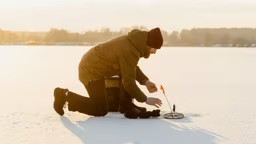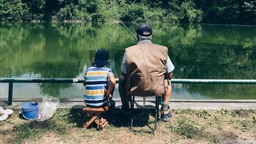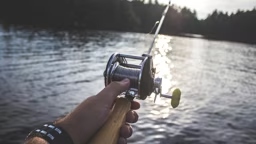
Locating gamefish is half the battle toward getting one in the boat. And one of the best ways to find feeding fish is to troll.
Bait that Hook
Trolled baits can be live or artificial and are often a combination of both. Walleye anglers troll nightcrawler harnesses that mix live bait with spinners and colorful beads. Trout and salmon fishermen trail spoons often draped with a minnow. And crappie anglers often troll live minnows impaled on a jig that has been dressed with hair, feathers or a rubber “twister” tail.
See also Scrambled Egg Trout
Can Kids Troll Too?
Trolling can be an effective way to hook kids on fishing, especially if the youngster has trouble casting. With a child’s shorter attention span sometimes it’s easier to maintain his/her interest by motoring along. Two tips for trolling with kids:
- Have a rod holder handy to support the fishing rod when the child gets weary of holding it or needs to take a break.
- Buy a couple of small clip-on bells that attach to rods used by bank fishermen to alert them of a bite.
Snap one onto your child’s rod, and place the rod in a holder while trolling. The jingle serves as a merry, audible signal to the child that he/she has a bite!
See also Teaching Kids How to Waterski
Trolling the Shoulder Seasons
In early spring and late fall, when water temperatures are low, you need shallower presentations to consistently catch fish. At these times of the year, the fish are prowling up high in the water column. Floating and diving minnowimitating lures – that run no deeper than four feet and bob to the surface when the boat is stopped – are great choices for spring and fall trolling. Try spinners and spoons too. A faster trolling speed can also be effective during the shoulder seasons, when fish are more lively than during the summer months. Vary your trolling speed and direction to trick fish while dragging baits; change often provokes strikes from fish that may be following your lure. That’s why you may notice that you get more hits on turns than when you are going straight ahead.
Going Deep in Summer
In the summer, when warm water temperatures can make the cold-blooded fish sluggish, you need to place the offerings as close to the fish as possible, and more often than not, that means putting the baits deep. One of the easiest ways to get a bait to run deeper is to put out more line. There comes a point, however when water drag on an excessive length of trolled line will limit how deep it can go, even when weighted or used with a diving lure. Simply slowing down the trolling speed will add depth to your presentation. When towing big-lipped, deep-diving crankbaits, slowing will make the buoyant lures run higher. In those cases, adding a few split shot to the line a foot or two above the lure will often add the four to six feet of extra depth that may be needed to put the lure in the strike zone. Another way to increase any lure’s depth while trolling is to decrease the line diameter. You can switch from 20-pound-test line to 10, and may get five to 10 feet more depth out of the same lure. Try the new micro-braided “super lines;” the smaller diameter allows for more depth without sacrificing strength.
When Dan Armitage isn’t fishing with his wife and son, he conducts fishing and outdoor photography seminars around the U.S., and works as an outdoors writer and radio show host in Ohio.










